Day 2: Wildfire committee questions investigator who found chop marks on power poles
PAMPA - The second day of the Panhandle Wildfires Investigative Committee hearings kicked off Wednesday with an extensive session, with seven panels testifying before the committee, as well as additional testimony from Texas A&M Forest Service fire investigators about the causes of the largest wildfire in Texas history.
In the morning's first panel, the investigative committee spoke to officials from the Texas AgriLife Extension Service about their efforts during the recent wildfires.
Andy Holloway, the extension agent for Hemphill County, spoke about the severe damage done to his county, with more than 70% of the county scorched by the fire, covering more than 406,000 acres.
“To date, the Hemphill County supply point has received loads of hope, and I’m talking about hay, fencing supplies and feed from over 30 states across the nation,” Holloway said. “We lost over 75 homes in our little community of 2,500 people, and 3,500 in the whole county. And so, we set up through a nonprofit using the First Baptist Church, a way for people to make contributions to help those homeowners.”
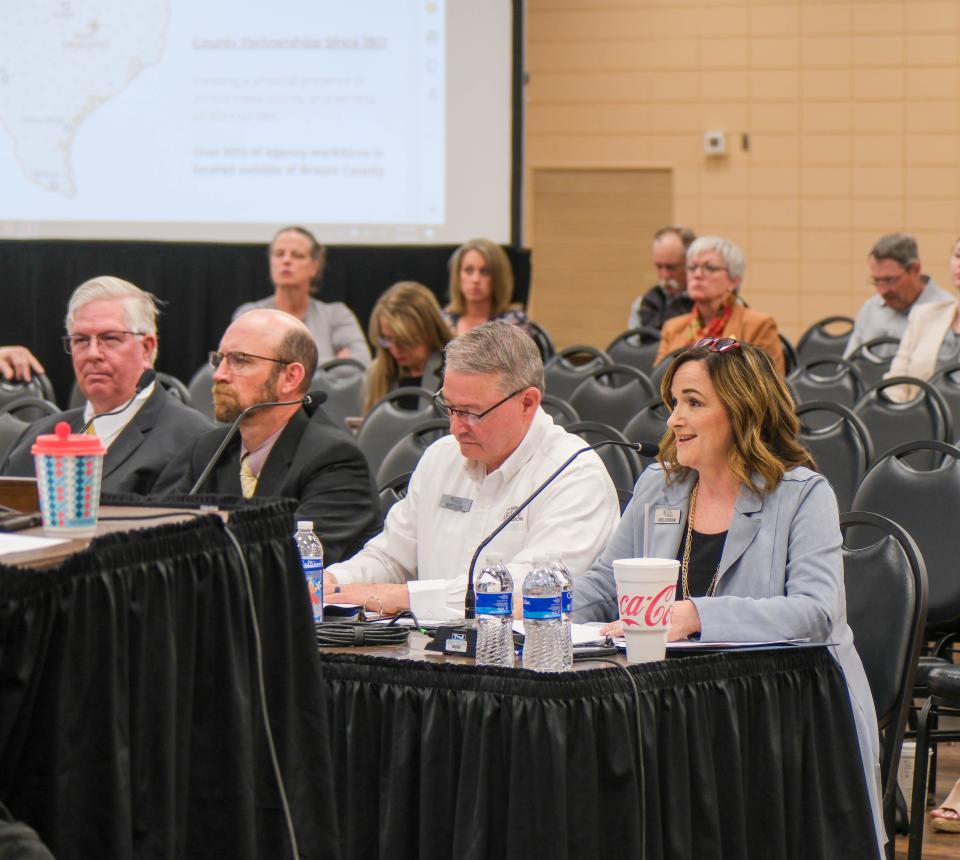
Holloway spoke glowingly of these resupply efforts from all over the nation, some coming from as far away as Florida.
According to Holloway, Roberts County, which borders his county to the west, lost about 850,000 acres to the fire. With that loss of land, and the heavy toll of the loss of livestock in both Hemphill and Roberts counties, Holloway says it will affect the counties for years to come.
“County Judge Mitchell Locke has reported to me that in Roberts County, he estimated over 7,000 dead cows,” Holloway said. “So, between Roberts and Hemphill County, we believe, over 15,000 mother cows - now I’m not talking about calves. I’m talking about the factory, the mother cows, at least another 20% of the cows that were not lost, had to be shipped, because they were significantly burned.”
Holloway said that another 15% to 20% of the remaining cows in both counties are still under evaluation from local ranchers. He said more livestock could be lost from injuries sustained in the fires.
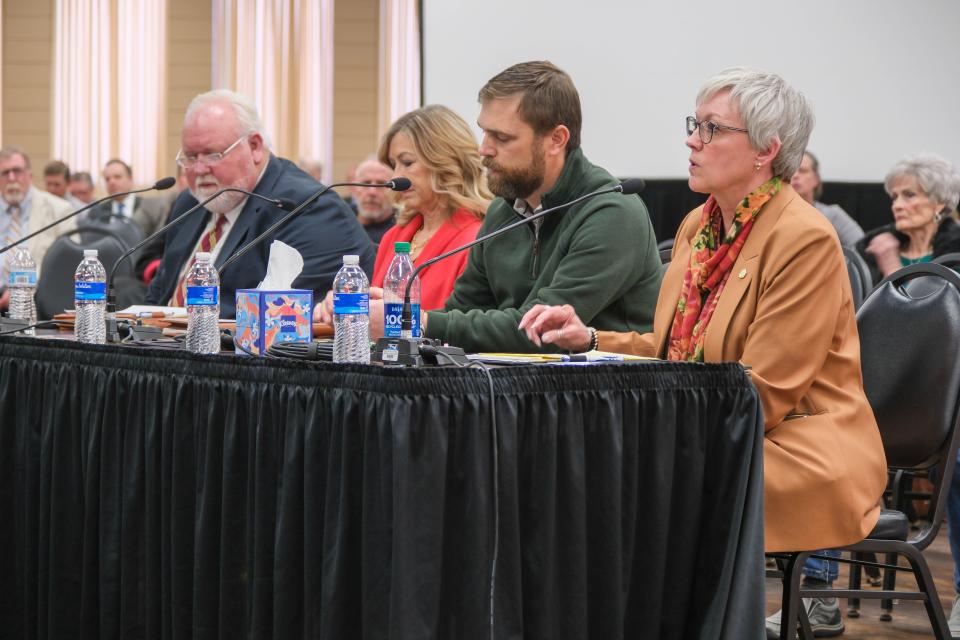
Addressing the pain of local ranchers, Holloway said that they were really hurting from the aftermath and impact of these fires and hopes that the hearings can do meaningful work to get needed help.
During the discussion of livestock loss, discussion was also brought up about the impact of the fire on bloodlines developed for years by ranchers to improve their stock, which was destroyed by the widespread fires. According to testimony, these impacts will set back many ranchers' products for years.
“We hope that through these testimonies and the collaboration of outstanding professional people working with the state legislature, we can do great things together, so that when the next fire comes, these losses of people in property are minimal, not the situation that we have experienced," Holloway added.
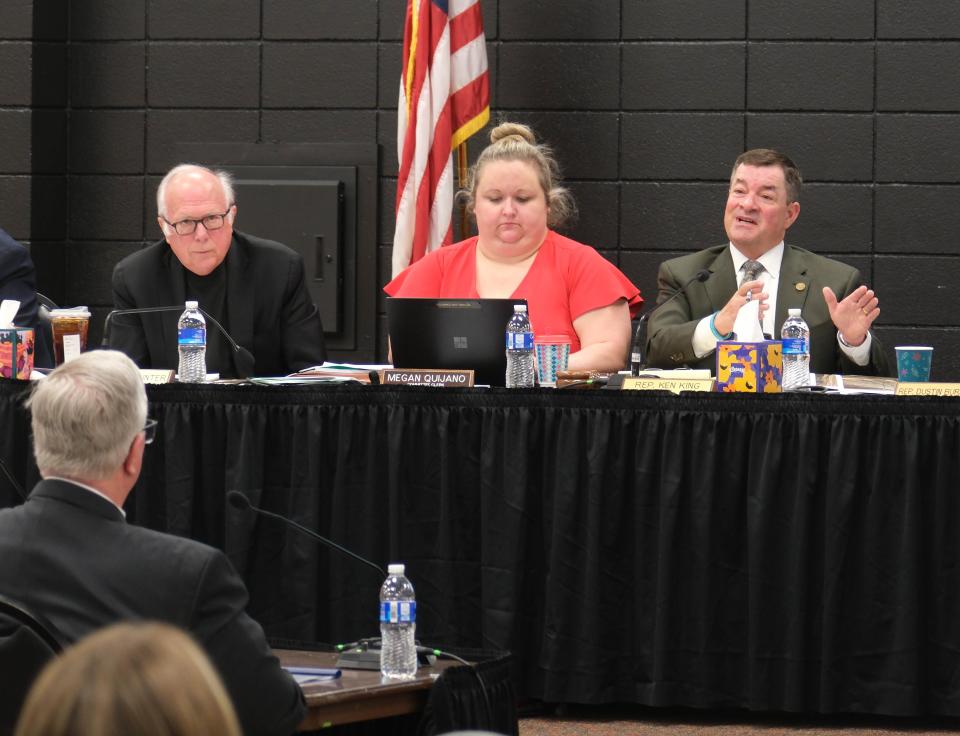
Chris Schneck, the State Fire Program Leader of Texas Parks and Wildlife, participated in the second panel of the day and spoke in length about prescribed burns and their role in reducing wildfires.
“Planned prescribed fires and other fuel treatments will often improve the land to prevent wildfires by providing better opportunities for firefighters to protect people and property and improving the health, also improving the health of the land, and reducing undesirable impacts from wildfires is important,” he said. “Of most recent memory, the wildland-urban interface projects around Borger, Texas, which did something in the fall of this year, as you’re aware, that seven miles were burned on the boundary of the city in an area through the cooperation of local farmers and ranchers,” Schenck said. “They put that fire line in, and the results were clear. But you can see that the use of prescribed fire reducing the fuel played a significant role in part of the Windy Deuce Fire that came to their town on Feb. 27.”
Schenck emphasized that preventing expanding fire fuels due to drought in rural areas is important in reducing the spread and ignition of wildfires through these methods, including prescribed burns.
“Traditional strategies and tactics don’t always work,” Schenck said. "You might say that doing the same thing and expecting different results is, at best, a strategy of hope. And at worst, a definition of insanity.”
At issue during much of the discussion over the past two days has been a contentious relationship between the way Texas A&M Forest Service has interacted with local landowners and departments. One of the significant issues is the use of bulldozers rather than land graders to create fire breaks. The contention is that bulldozers do too much damage to the soil, which will have lasting effects, while land graders are just as effective with less damage to soil.
Also discussed was the lack of proper firefighting vehicles available in the Texas Panhandle, with many of the areas being inaccessible to the vehicles at hand. Many were concerned that many of the personnel brought in by the Texas Intrastate Fire Mutual Aid System (TIFMAS) did not have the proper equipment to be able to fight fires in the more remote rural areas. Multiple people testified that better state resources should be provided for these areas and for the rural fire departments to prevent a fire of this magnitude from spreading.
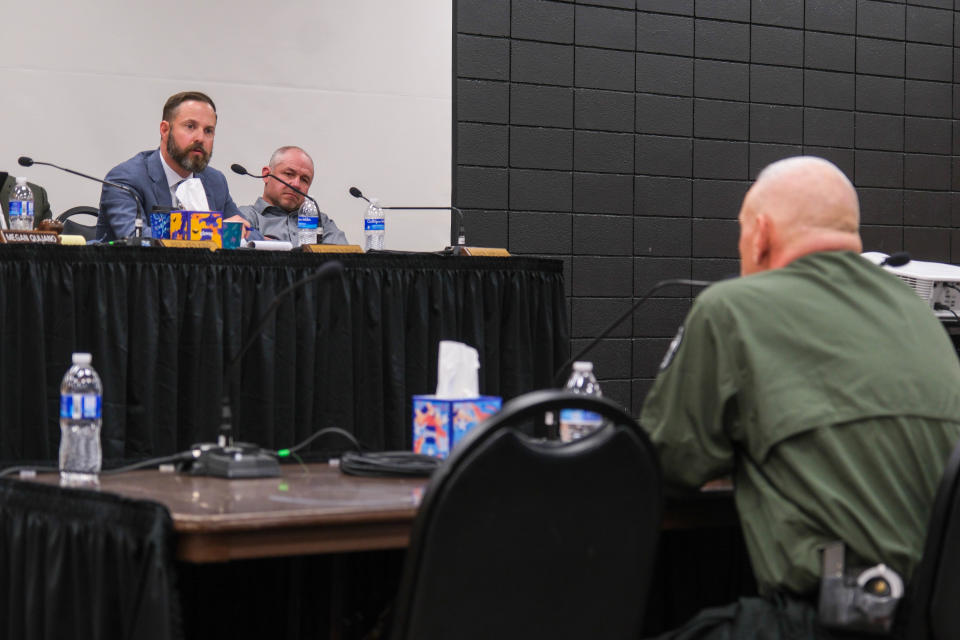
Following the panel, Kevin Pierce, a criminal investigator for the Texas A&M Forest Service who investigated the Smokehouse Creek Fire, testified before the committee about the cause of the fire.
“Early in the investigation on the Smokehouse Creek Fire, it was determined that the power line, the broken power pole, and the power line were the ignition source of that fire,” Pierce said.
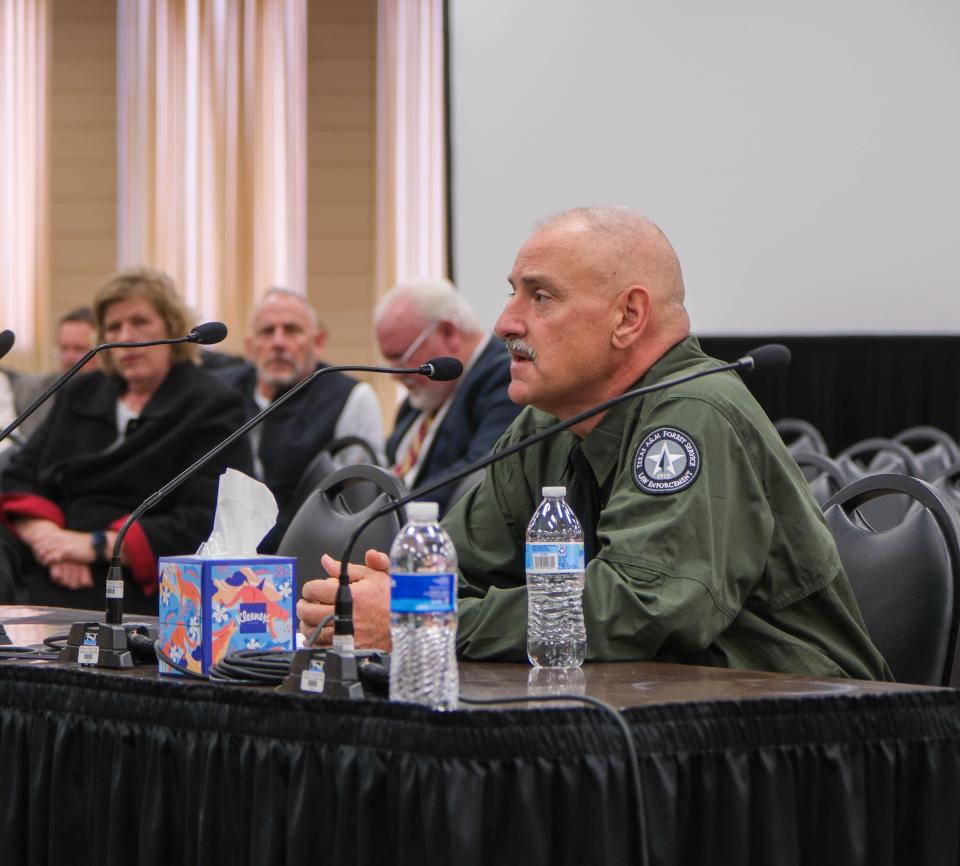
Pierce was then asked about what caused the broken pole. He said that the pole had signs of deterioration and chop marks at its base at its ground level. He said other poles in the area had similar chop marks, so this pole was not singled out as the only pole with these marks.
According to Pierce, this was his first investigation that found a power pole to be the cause of the fire. Committee members questioned how Pierce identified the power line in question and who owned it.
Pierce testified that the pole belonged to Xcel Energy and, when asked if any other groups were involved with the maintenance of the power line, stated that it was his understanding from Xcel that Osmose Utilities Services company was hired to inspect utility poles in the region.
Committee member Rep. Todd Hunter of Corpus Christi then revealed that Osmose had declined to appear at the hearing in a letter to Chairman Rep. Ken King and offered a statement from the letter: “Although Osmose cannot attend the committee meeting this week, we welcome the opportunity to discuss fire mitigation-related service offerings and recommended best practices in the State of Texas with your staff should the committee have additional questions.”
When asked about chop marks on the pole, Pierce said that he had never seen them in his 19 years of service before this investigation. When asked if he felt this was part of any inspection method, Pierce said that was a question for Osmose, which has not provided an answer to this point.
According to the Texas Tribune, Osmose released a statement: "Osmose is deeply concerned about the profound impact of the Panhandle Wildfires and is committed to assisting with all investigations," the statement said. "Although we were unable to attend the Committee meeting on short notice, we sent the attached letter to the Investigative Committee and offered to meet with its staff to discuss fire mitigation and recommended best practices in the State of Texas."
Rep. King, during the discussion, criticized Osmose's decision not to appear at the hearings.
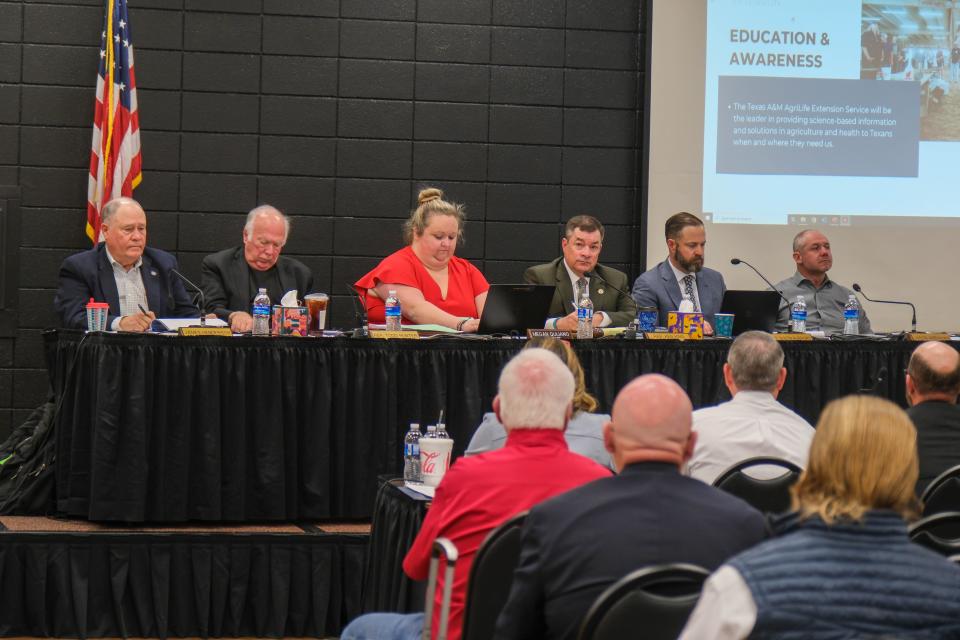
“Our local utilities were more than happy to come and participate in this investigation, but this private corporation has evidently denied our request despite the situation in the Panhandle,” he said.
Discussions with multiple panels continued into the afternoon, featuring discussion from landowners and other entities in the Texas Panhandle, which spoke about the impact on their land and infrastructure in the area.
Rep. Dustin Burrows from Lubbock spoke about the second day of the committee hearings.
“I think at this point in time, we are still gathering information. This has been traumatic and will have a huge impact on the people in this region,” Burrows said. "We continue to learn from every single witness. I have been proud to be able to participate in finding answers and helping to produce solutions so that this does not happen again."
“We are not going to give up. At this point in time, we do not know their full level of responsibility or culpability in this issue,” he said in regard to the utility inspection company. “The Texas fire investigators have identified them as someone we need to get answers from. Poles with chop marks created the big fire, and I would like to know why they had chop marks on them. They are a company of interest, and I would like to know why they did not take measures to ensure they did not fall over with the high winds we have in this region. The people and committee deserve answers, and we will get them. We will find a way to determine their involvement, and why they were afraid to testify before the committee in an open hearing.”
The hearings continue Thursday.
This article originally appeared on Amarillo Globe-News: Panhandle Wildfires Investigative Committee holds day 2 of hearings

